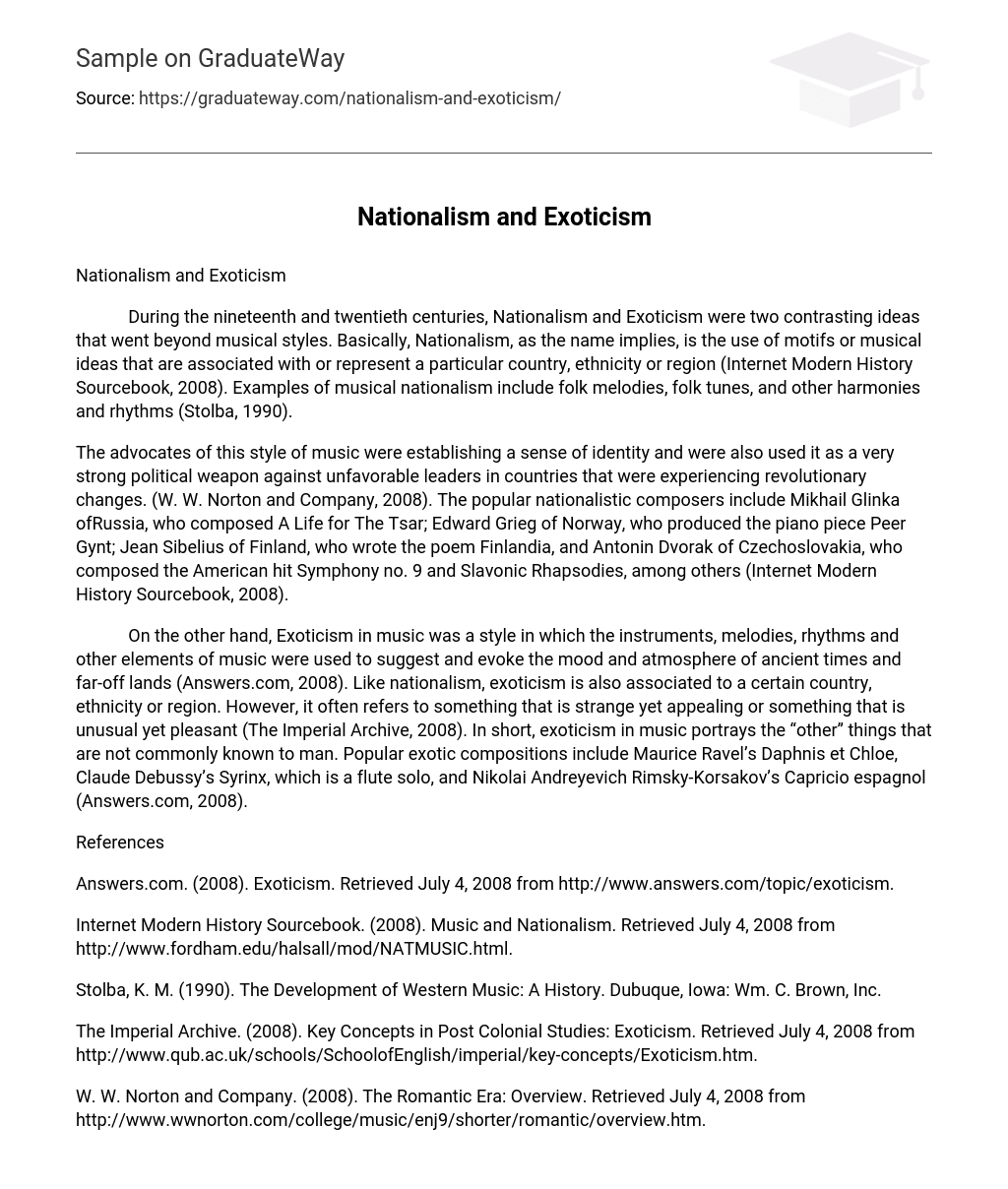During the nineteenth and twentieth centuries, Nationalism and Exoticism were two contrasting ideas that went beyond musical styles. Basically, Nationalism, as the name implies, is the use of motifs or musical ideas that are associated with or represent a particular country, ethnicity or region (Internet Modern History Sourcebook, 2008). Examples of musical nationalism include folk melodies, folk tunes, and other harmonies and rhythms (Stolba, 1990).
The advocates of this style of music were establishing a sense of identity and were also used it as a very strong political weapon against unfavorable leaders in countries that were experiencing revolutionary changes. (W. W. Norton and Company, 2008). The popular nationalistic composers include Mikhail Glinka ofRussia, who composed A Life for The Tsar; Edward Grieg of Norway, who produced the piano piece Peer Gynt; Jean Sibelius of Finland, who wrote the poem Finlandia, and Antonin Dvorak of Czechoslovakia, who composed the American hit Symphony no. 9 and Slavonic Rhapsodies, among others (Internet Modern History Sourcebook, 2008).
On the other hand, Exoticism in music was a style in which the instruments, melodies, rhythms and other elements of music were used to suggest and evoke the mood and atmosphere of ancient times and far-off lands (Answers.com, 2008). Like nationalism, exoticism is also associated to a certain country, ethnicity or region. However, it often refers to something that is strange yet appealing or something that is unusual yet pleasant (The Imperial Archive, 2008). In short, exoticism in music portrays the “other” things that are not commonly known to man. Popular exotic compositions include Maurice Ravel’s Daphnis et Chloe, Claude Debussy’s Syrinx, which is a flute solo, and Nikolai Andreyevich Rimsky-Korsakov’s Capricio espagnol (Answers.com, 2008).
References
Answers.com. (2008). Exoticism. Retrieved July 4, 2008 from http://www.answers.com/topic/exoticism.
Internet Modern History Sourcebook. (2008). Music and Nationalism. Retrieved July 4, 2008 from http://www.fordham.edu/halsall/mod/NATMUSIC.html.
Stolba, K. M. (1990). The Development of Western Music: A History. Dubuque, Iowa: Wm. C. Brown, Inc.
The Imperial Archive. (2008). Key Concepts in Post Colonial Studies: Exoticism. Retrieved July 4, 2008 from http://www.qub.ac.uk/schools/SchoolofEnglish/imperial/key-concepts/Exoticism.htm.
W. W. Norton and Company. (2008). The Romantic Era: Overview. Retrieved July 4, 2008 from http://www.wwnorton.com/college/music/enj9/shorter/romantic/overview.htm.





